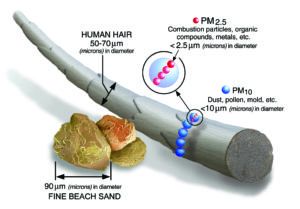Yesterday, EPA finalized a rule lowering the primary annual National Ambient Air Quality Standard for PM2.5 to 9.00 ug/m3. This is a significant reduction from the current 12.00 ug/m3 standard and a victory for environmentalists, even though they had advocated for larger reduction.

There is substantial evidence supporting the reduction, both in the legal and the common sense understanding of this term. The evidence in support of a lower standard has been piling up for some time. The 9.00 ug/m3 limit is within the range recommended by the Clean Air Science Advisory Committee, historically a solid harbinger of a rule's prospects for surviving judicial review.
Notwithstanding howls of outrage by some members of Congress regarding the costs that the more stringent NAAQS will ultimately impose, it's worth remembering that the Supreme Court ruled in Whitman v. American Trucking Associations that EPA may not consider costs in setting NAAQS. The opinion in Whitman was written by Justice Scalia and the holding that EPA may not consider costs was unanimous. Moreover, Justice Scalia's opinion makes clear that the statutory language is unambiguous, so this is not a ruling that would be at risk should the Supreme Court overturn Chevron.
As I've noted previously, I'm willing to go out on a limb and predict that this rule will survive judicial review. EPA has indeed found the Goldilocks PM2.5 NAAQS.
Significant emitters of PM2.5 would be wise to start preparing for State Implementation Plans requiring reductions in PM2.5 emissions.
To view Foley Hoag's Law and the Environment Blog please click here
The content of this article is intended to provide a general guide to the subject matter. Specialist advice should be sought about your specific circumstances.

